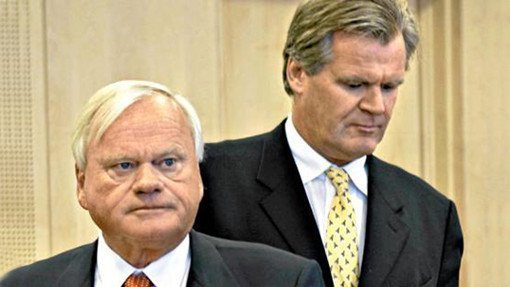Fredriksen’s synergies stick to the winning formula

Diran Majarian from Amalia Tankers ruminates on if Norway’s richest man still has the magic touch.
There’s been a few different shake-ups and synergies seen in the Fredriksen empire of late, most notably his stake in the new Exmar LNG venture and the merger of Frontline and Frontline 2012. Seeing the value in this requires us to look backwards in order to see forwards.
John Fredriksen is a financially savvy ship owner. He is more sophisticated in his shipping empire than most of his Greek counterparts like, say, Peter Georgiopoulos. He is the wealthiest man in Norway. He has diverse holdings in different sectors of the shipping and offshore market. He tends to focus on growth sectors like gas shipping. Some of his positions make money; other times he makes bad calls that lose money. On average, he has been remarkably successful in his business decisions. Very important is that he has a deep pocket to absorb losses and a good record in restructuring his positions that go wrong – Frontline is a good example of all this.
But he has made some bad calls for Frontline, his banner tanker company – particularly the badly timed and overpaid block purchase of the suezmax tanker fleet from Top Ships, just prior the global financial crisis back in 2008. Fredriksen decided to split Frontline up into two companies, of which Frontline was the bad company and Frontline 2012 was the good company.
Frontline 2012 acquired five VLCC newbuilding contracts, six modern VLCCs, including one timecharter and four modern suezmax tankers from Frontline for $1.12bn, based upon fair market values. In addition, the new company assumed $666m in debt associated with the vessels and newbuilding contracts, as well as $325.5m in remaining newbuilding commitments. Frontline’s fleet was reduced to 40 units and newbuilding commitments were also being reduced to $112.4m. After the assumption by Frontline 2012 of the debt and the prepayment of $13m associated with one of the remaining vessels, there was no outstanding debt and the remaining cash proceeds were $70m, leaving a much tidier balance sheet to withstand a prolonged weak tanker market.
The critical path of the transaction involved a successful private placement of 100m new shares, priced at $2.85/share, raising $285m for the new Frontline 2012 venture. Fredriksen effectively bankrolled this operation through his financial company Hemen Holdings. There was also a restructuring of Frontline’s obligations with its affiliate Ship Finance International, with a temporary reduction of bareboat charter hire paid by Frontline. Fredriksen’s bank syndicate said that it was one of the easiest restructurings that had been involved in with their clients.
While, subsequently, the tanker market deteriorated to even worse levels and it seemed for a moment that Frontline might not survive without further assistance, the company managed to weather the storm.
Given the history and rationale of this complex restructuring, it is not surprising that Fredriksen would want to merge the two companies now that market conditions have improved. It is a very logical internal synergy that Fredriksen probably had in mind when he formed Frontline 2012 in the first place.
Fredriksen has been diversified in LNG shipping for around 15 years, since his original purchase of Golar in 2001. Golar formed a master limited partnership (MLP) structure several years ago, creating Golar LNG Partners, dropping down four vessels and raising $252m through an IPO. The purpose of this partnership was to focus on providing floating storage regasification and LNG transportation under long-term contracts. Golar LNG Partners became an industry leader in FSRUs (floating storage and regasification units) deals, which has been a growing and very specialised subsector in LNG shipping with very high entry barriers.
Last year, Fredriksen acquired an interest in Flex LNG, a troubled pioneer FLNG venture that had embarked on an ambitious construction project at Samsung Heavy Industries in South Korea. Flex failed to secure necessary end user contracts and fell into financial difficulties to cover its CAPEX to perform its contracts with the Korean shipyard. Last year, Fredriksen also reshuffled his interests with his long-standing partner Tor Olav Troim in a business divorce, where Troim moved over to the Golar companies and Fredriksen reversed out.
Fredriksen wanted to re-enter the LNG sector and find a place for his position in Flex. He was looking for a partner that had solid experience in gas shipping. Golar and Exmar had flirted together on several occasions in the past, even forming an LNG carrier pool together for a short period.
Exmar LNG is a sensible external synergy for both Fredriksen and Saverys. It will put Saverys in a better position financially to pursue the business he has been looking to expand for some time, with a cash-rich partner who already has a foothold in the FLNG market through Flex. It also gives Fredriksen a strategic partner with whom he might negotiate a buy-out down the line.
Diran has been managing director of Amalia Tankers since 1987. He is a shipping finance expert, having formerly been vice-president of the Bank of America’s shipping loans portfolio. He was a partner with Gadot Group/ Chemship in a parcel chemical tanker joint venture and held management positions at major Greek shipping companies. He is active in taking shipping projects to capital markets and frequently advises institutional investors on the shipping sector.
